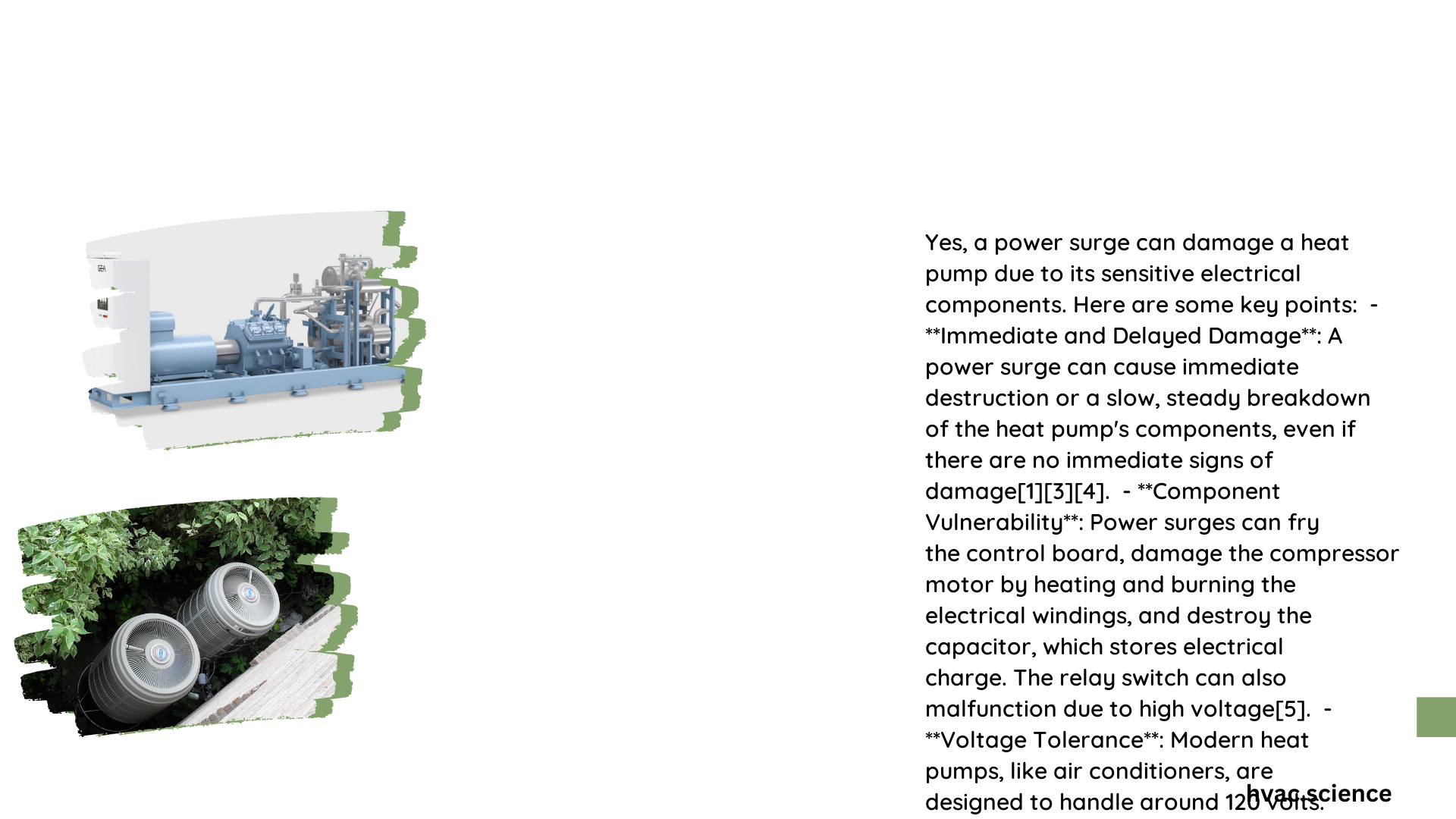Power surges can indeed cause significant damage to heat pumps, affecting various components and potentially leading to costly repairs or replacements. These sudden spikes in electrical voltage can harm circuit boards, compressors, motors, and other crucial parts of the heat pump system. Understanding the risks, protective measures, and repair processes is essential for homeowners and HVAC professionals alike.
What Are the Specific Components Affected by Power Surges?
Power surges can wreak havoc on several critical components of a heat pump:
- Circuit Boards: The sophisticated electronics controlling the heat pump’s operation are highly susceptible to damage.
- Compressors: Voltage spikes can overload and damage these essential components.
- Motors: Electrical surges can cause motor windings to burn out.
- Capacitors: These energy-storing devices can fail when exposed to excessive voltage.
- Wiring: Insulation can melt or degrade, leading to short circuits.
How Do Power Surges Impact Heat Pump Efficiency and Lifespan?

Power surges can have both immediate and long-term effects on heat pumps:
- Reduced Efficiency: Even minor surges can degrade performance over time.
- Shortened Lifespan: Repeated exposure to surges can lead to premature system failure.
- Increased Energy Consumption: Damaged components may cause the system to work harder, using more electricity.
What Are the Signs of Power Surge Damage in Heat Pumps?
Look out for these indicators of potential surge damage:
- Failure to produce warm or cool air
- Frequent circuit breaker trips
- Unusual noises or odors from the unit
- Unresponsive controls or display
- Inconsistent temperature regulation
How Can You Protect Your Heat Pump from Power Surges?
Implementing proper protection measures is crucial:
Types of Surge Protectors
- Whole-House Surge Protectors
- Installed at the main electrical panel
- Diverts excess current to ground
-
Protects all connected appliances
-
Point-of-Use Surge Protectors
- Installed near the heat pump
- Provides additional protection for the specific unit
Surge Protector Ratings and Installation
| Feature | Recommendation |
|---|---|
| Joule Rating | 40,000+ joules |
| Clamping Voltage | 330V or lower |
| Response Time | < 1 nanosecond |
Installation costs typically range from $500 to $2,000, depending on the complexity and type of protection.
What Is the Repair Process for a Surge-Damaged Heat Pump?
When a power surge damages a heat pump, the repair process typically involves:
- Diagnosis: A thorough inspection to identify all affected components.
- Component Replacement: Replacing damaged parts with new, compatible components.
- System Testing: Comprehensive testing to ensure proper functionality and efficiency.
Repair costs can vary widely, from a few hundred dollars for minor repairs to several thousand for major component replacements.
Are There Industry Standards for Heat Pump Surge Protection?
The 2020 National Electrical Code (NEC 230.67) mandates whole-house surge protection for new homes and electrical service upgrades. However, additional HVAC-specific protection is often recommended for comprehensive safeguarding.
How Often Should Surge Protection Devices Be Maintained?
Regular maintenance of surge protection devices is crucial:
- Annual Inspections: Check for signs of wear or damage.
- Replacement Indicators: Many modern surge protectors have indicator lights or alarms signaling when replacement is necessary.
- Lifespan: Typically 3-5 years, but can vary based on usage and surge events.
By understanding the risks of power surges to heat pumps and implementing proper protection measures, homeowners can significantly reduce the likelihood of costly damage and extend the life of their HVAC systems.
